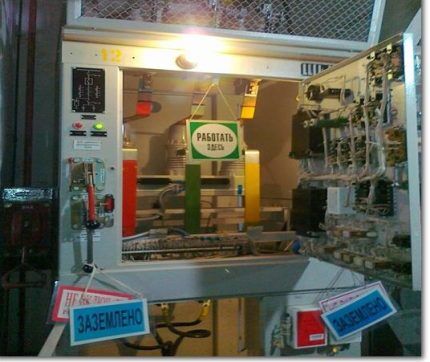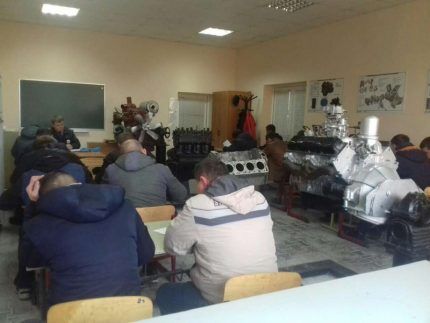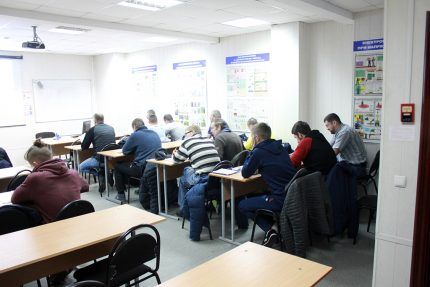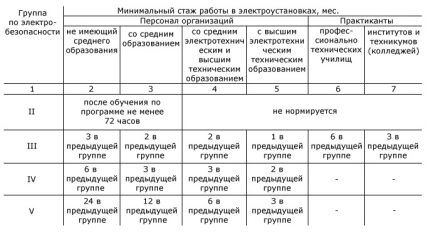Electrical safety groups: specifics of assignment and presentation of admission according to the new rules
To have the right to work in any electrical installations, you must have the appropriate qualifications and special knowledge. A diploma indicates a specialized education, but this is not enough.The peculiarity of such work is that to carry it out you need a certificate from the electrical safety group and the appropriate permit.
What is meant by these terms, what is needed in order to obtain such permission - all this will be discussed in the publication below. We will also look at the features of assigning the first, second, third, fourth and fifth tolerance groups and analyze the information contained in the access group certificate.
The content of the article:
Who can be assigned a qualification group?
Obtaining an admission group assumes that the employee has a sufficient level of knowledge in the field of safe maintenance and operation of electrical installations. It is assigned to personnel involved in work in electrical installations.
Group assignment is preceded by:
- training (instruction);
- passing the exam;
- issuance of the appropriate certificate (if the exam is passed successfully).
First of all, you need to know that all personnel directly or indirectly related to electrical installations belong to one of three categories or classes:
- electrical engineering;
- electrotechnological;
- non-electrical.
Each group of personnel solves a specific area of tasks specified in the Interindustry Safety Regulations for the operation of electrical installations. In accordance with this document, there are only five electrical safety groups. The more complex the task, the higher the level of electrical safety clearance the service personnel must have.

Let's look at the criteria by which workers are divided into categories.
Category #1 - electrical personnel
Electrical personnel, first of all, includes such a subcategory as administrative workers, starting with the foreman and ending with the chief engineer. Their responsibilities include process planning, as well as the deployment of installation, adjustment, and repair of electrical equipment.
The next subcategory is operational. The workers assigned to it are engaged in both operational and technical maintenance of the enterprise’s electrical equipment. Their responsibilities include inspections, preliminary preparation of work areas, and operational switchovers.

If appropriate training is available, personnel in this subcategory can directly participate in damage elimination, emergency response, and assist employees carrying out repair work.
The third subcategory is specialized specialists.These include both ATP and welders, electricians, electricians. Personnel assigned to the electrical class are assigned electrical safety groups from primary (second) to fifth. Each group limits the functions of its owner - the broadest powers are vested in personnel with Group V.
Category #2 - electrical engineering personnel
Personnel servicing, repairing, operating electrotechnological installations - galvanic, electrolysis, welding, electric smelting - belong to electrotechnological.

This category also includes personnel whose job descriptions require knowledge of industrial safety:
- Administrative and technical workers, related to operational and technical services, adjustment, installation, and repair work in power plants.
- Operations staff, engaged in the management of installations and their ongoing maintenance. Their responsibilities include preparing work areas, supervising other employees, and performing work required by the current operation of the equipment.
- Operations and repair personnel, trained to service the equipment assigned to him.
- Repair workers. They are responsible for installation, testing, maintenance, and commissioning.
Belonging to the electrotechnological category implies the presence of a safety qualification group of at least second.
Category #3 - non-electrical personnel
Employees who are not included in any of the above categories are classified as non-electrical personnel.However, it cannot be said that their work eliminates 100% the likelihood of electric shock.

The employer must approve the list of such employees. They have the first admission group. They must know safety rules and the basics of electrical engineering at least to a minimum extent sufficient to perform the work assigned to them without risk to themselves.
Commission and group assignment rules
Since 2018, the assignment of an electrical safety group occurs according to new rules, legalized by order RTN No. 00-08-05/388. But the changes concern obtaining higher admission groups. From this moment on, training centers do not have the authority to conduct certification; they only have the right to study. At the end of the process, Rostechnadzor accepts the exams.
There is a second option - in accordance with the Order, starting from July 29, 2018, enterprises must create their own commissions and test knowledge on site.
Certification commissions are formed on the basis of the technical specifications for electrical installations of consumers from 01/13/2003 No. 6.

The commission must include at least 5 people. Its members can be persons who have undergone training at Rostechnadzor and received the necessary qualifications
All requirements are specified in the Rules in clause 1.4.33. More stringent requirements are imposed on the chairman of the commission - if we are talking about work in power plants with voltages up to and above 1000 V, then a fifth group is required.
If an enterprise has electrical installations that operate exclusively at voltages up to 1000 V, 4 groups are sufficient.
When forming a commission, they are based on the level of the person being certified.Electrical and electrical engineering personnel are tested by the commission. In this case, the employee responsible for electrical equipment is appointed as the chairman.
Usually it includes an safety engineer who monitors the operation of electrical installations, a chief or leading engineer. Based on the results of the certification exams, the commission draws up a protocol. All members of the commission sign it. Here there is a note about the assessment of knowledge, about the assigned admission group, about the date of the next certification.
Each enterprise must develop lists of professions and positions of electrical technical personnel and management employees, as well as workers with the first group of admission.

The employer is responsible for recruiting uncertified workers to work at the establishment. It can be both administrative and criminal.
Requirements for obtaining a group
The admission group outlines the tasks that its holder can solve in a specific segment of electrical equipment - conclusions are made by the commission that certifies the employee.
Assigning an initial or first group
No special preparation is required to receive the first group. The employee is given instructions, then a short survey - oral or written. It is enough for the examinee to have an understanding of electrical safety, first aid in case of electric shock, and to be familiar with safety instructions. We recommend that you familiarize yourself with the meaning of the posters electrical safety and features of their use.
Both the instruction and the issuance of the permit are entrusted to a specialist with a group of at least third. Even a person who has graduated from a university and has a degree in electrical engineering will not be able to immediately get a group higher than the second or first. Subsequent groups are assigned depending on the length of service at the energy facility.
The procedure for obtaining the second admission group
The Qualification Commission assigns the second admission group to electrical personnel who are engaged in servicing equipment and installations with an electric drive. This group includes thermal operators of HDTV installations, welders, elevator operators, lifting equipment operators, and others.
The second group assumes that the employee has basic knowledge about the design of the electrical installation and its equipment. He must be clearly aware of the threats created by electric current and the danger of proximity to live parts.

Having a level 2 permit, an employee can service electrical installations, but not connect them. This tolerance group is assigned based on the results of testing at Rostechnadzor or by an enterprise commission. In this case, the person being certified must have at least a month of work experience in the EU by profession.
When taking the exam for the first time, the employee must first undergo training for at least 72 hours.
How to become the owner of the third group?
A person applying for the third group of admission must have a higher level of theoretical and practical knowledge. Having it, he can connect electrical devices up to 1000 V and work with them.It is permissible to include him in the team working with electrical power units of more than 1000 V.
His certificate must contain the notation “up to and more than 1000 V”. The group is assigned to those employees who have passed the appropriate certification in the supervision or commission of the enterprise with a positive result.
In order for tests for the third tolerance group to result in a positive result, it is necessary to have textbook knowledge in the field of general electrical engineering, understand the design of the power plant, and know the procedure for its maintenance. A clear understanding of the general safety rules, in particular the rules for permission to work, is also necessary.
As for the work directly performed, you need knowledge of the special requirements for it, as well as the rules for using and testing protective equipment.

The third group requires the ability to monitor those working in electrical installations to ensure their safety. In an unusual situation, such a worker must, in compliance with the rules, be able to remove the victim from the area of the electric current and provide him with first aid.
An employee who has not yet reached the age of 18 cannot receive the third group.
Clearance level four
The fourth access group can be assigned to employees classified as electrical personnel. The procedure for its award is the same as in the case of the third admission group. An employee with the fourth group has much wider boundaries of rights.
He can service installations above 1000 V and issue orders based on the approved list of works in these installations. He is also allowed to issue work orders for any work in the establishment up to 1000 V. If there is an entry in the certificate “up to and more than 1000 V”, the employee can be appointed as a manager, a work producer, and a permitter.

Before officially receiving this responsible electrical safety group, a specialist with a higher education must work in the third group for two months. If a person does not have such an education, but he has the third group and has worked in it for at least six months, he can also be certified for the fourth group. Trainees are not assigned the fourth group.
For the fourth group, the required amount of knowledge includes the program for the previous three groups, as well as:
- knowledge in electrical engineering that meets the full program of a specialized vocational school;
- knowledge of electrical and fire safety, electrical installations to the extent appropriate for the position held;
- experience in reading diagrams and conducting briefings;
- ability to train employees in an approved electrical safety program and actual techniques for providing initial medical care.
More stringent and increased requirements are applied to such an employee during the exam.
Fifth admission group
The fifth group is assigned to the contingent that manages all electrical equipment of an enterprise, organization, its structural divisions, organizes operational and repair work, supervises reconstruction, and plans energy development prospects.

This group can be assigned based on final certification at Rostechnadzor. An employee with the 5th group of access issues orders and orders, acts as a permitting, managerial person, and performer of work in any electrical installations. A prerequisite is the presence in the certificate of the entry “up to and above 1000 V”.
Higher education in electrical engineering gives the right to attempt to obtain the fifth group after a period of work of three months. A person who does not have such a compelling reason can be certified for the fifth group after working for 24 months in the fourth group.
Group number five assumes that the specialist has a large amount of knowledge:
- on the layout of electrical equipment assigned to his jurisdiction;
- thorough reading of diagrams;
- safety rules and practical use of protective equipment;
- timing of testing of protective equipment;
- requirements of fire and electrical safety standards.
The employee must have the ability to explain existing standards during training. The specialist is also required to organize and manage work of any complexity in electrical installations.
Recertification is carried out once a year or every three years. It all depends on the position held.
Contents of the admission group certificate
A document confirming possession of a permit - a certificate.It indicates the profession or position held, the group, the number and result of tests, and the date of the next certification.

First of all, the document issued by the relevant commission contains information about electrical safety certification.
The category means repair or operational, AT personnel, operational and repair, ATP, having the right according to their position.
The first sheet must contain the seal of the enterprise and the signature of the person responsible for electrical equipment. The latter’s certificate is certified by the head of the enterprise with his signature.
A record that the employee is authorized to perform special work - at heights, for example, or to carry out measurements and tests in electrical installations - is made on the main page.
For this purpose, on the last page of the electrician’s permit there is a table entitled “Certificate of the right to carry out special work.”
Conclusions and useful video on the topic
How to properly authorize a team to work in an electrical installation:
Conditions for assigning the first group:
No enterprise will be able to operate successfully in the electric power industry if its management does not pay enough attention to the requirements set by law regarding the level of personnel certification.
A very important point in the field of electrical safety is both the timely training of workers and the assignment of access groups. The main thing is that the assigned groups clearly correspond to the job responsibilities of a particular employee.
Have you recently passed recertification and been assigned an access group? Share your experience with beginners in the comments below this article.
If you have a professional knowledge of the topic of assigning electrical safety groups and want to supplement the above material with useful comments or corrections, please write all additions in the comments block.




The topic has not been addressed when in groups 3 and 4 there can be entries “up to 1000v”, and when “up to and above 1000v”